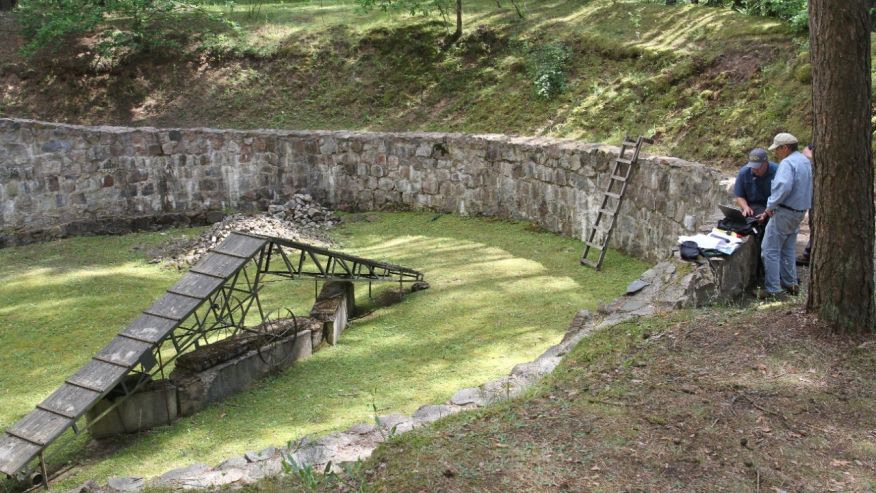“This discovery is a heartwarming witness to the victory of hope over desperation.” – Jon Seligman, archaeologist with the Israel Antiquities Authority

PHOTO: Fox News
LITHUANIA, APRIL, 1944 – Under the cover of darkness, forty prisoners tried to escape a Nazi concentration camp at Ponar, Lithuania, through a tunnel they dug with spoons they’d picked off of dead bodies and their hands. The guards were alerted to the escape and shot many of the prisoners, but a dozen made it to safety.
Now, decades after the fact, a tunnel has been discovered in Ponar using ground penetrating radar and a new method of imaging, called electric resistivity tomography. The find was reported by the Israel Antiquities Authority. The new technology has allowed scientists and historians to look at the tunnel without disturbing the site.
The escapees were part of a group known as the “burning brigade”- eighty prisoners from the nearby Stutthof concentration camp who were made to burn the bodies of the camp prisoners to cover up the atrocities of the Nazis.
“We had pokers that we had to stick into the bodies, to pull them up, We put them on stretchers, head to head, feet to feet. The crematorium held about 3000 bodies, and we’d light it up. It was horrific.” – Survivor’s Account of the Stutthof Concentration Camp
Stutthof was near the small town of Sztutowo, in a secluded, wooded area. It was the first concentration camp outside of German borders, and was in operation from September 2nd, 1939, to May 9th, 1945. Many prisoners died of typhus while held there, and SS guards gassed the weak and sick in the camp’s small gas chamber. They used the prisoners as forced laborers, and it’s been confirmed that Nazi Dr. Rudolf Spanner used Stutthof as one of three sources for human remains to produce soap.
The Nazis killed an estimated 100,000 people in this part of Lithuania, about 70,000 of which were Jewish. It’s been described by some experts and historians as “ground zero for the final solution”.
Using the new technology, looking in areas described by survivors of Stuthoff, the researchers were able to find the tunnel used by the escaping prisoners in April of 1944. It was about 100 feet long. It would have taken the prisoners almost three months to dig it, using only their hands and spoons pilfered from the bodies they were forced to cremate.
It’s an important and grisly chapter in human history, one that we must not forget. But, as archaeologist Jon Seligman reminds us, the human spirit is one of the most powerful things in the world. Somehow, against all odds, when they saw no way out and no sign of hope or rescue, the prisoners at Stutthof made a way out of darkness and sure death with their bare hands. Twelve of the escapees survived. That was twelve lives saved, a testament to the power of courage and determination in desperately dark times.

